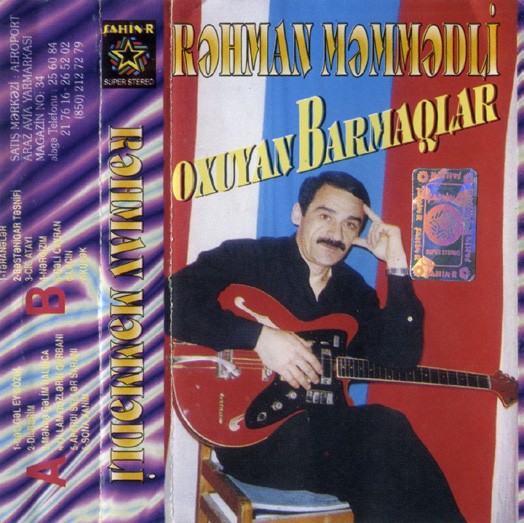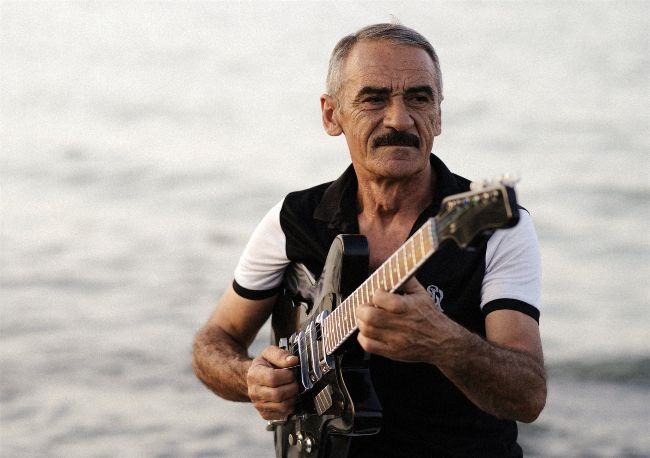FILE UNDER...
Stinging lessons
Iron Curtain guitars trained to swarm and attack.
By Jim Irvin.

Azeri mettle: R hman M mm dli and his psychedelic gitara; (top) with his band in the late ’70s.

Sitara Ibrahimbayli
LET US now praise Czechoslovakian guitars.
In the 1950s, electric guitars made by a Czech company called Resonet were steady sellers in the UK when American guitars weren’t being allowed into the country. Resonet’s ‘Grazioso’ model, styled on the Fender Stratocaster and marketed here as the Futurama, was a popular beginner’s choice, with youngsters George Harrison, Jimmy Page and Eric Clapton supposedly among its satisfied customers. The British embargo on American imports was lifted in 1959, although it still took a while for them to show up and become affordable.
But in the communist bloc that never happened and Czech guitars continued to dominate, though Resonet gave way to the Jolana factory, which opened its doors in 1960 and was soon producing popular models called Tornado, Typhoon and Hurricane. These blew across the Caucasus and one, reaching the mountainous region of Nagorno-Karabakh in Azerbaijan, landed in the hands of a young musician named Rafiq Hüseynov, AKA R miş, who played the modal music known as mugham on a tar, a long-necked stringed instrument similar to a saz. R miş’s red gitara – as the electric instrument is known in Azerbaijan – became a celebrated beacon of cool, his particular model being a hollowbodied instrument with a high action between the bridge and end-pin which gave him leeway to bend the strings with his wrist as he played, to summon the woozy quarter tones that mugham requires. His innovation inspired many new players, who adapted and tweaked their gitara to replicate traditional tones. This style effectively became a new genre in itself.